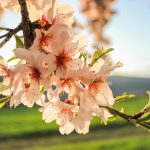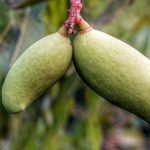
PROFITABLE AND GROWING CROPS: AVOCADOS
The avocado is one of the most sought-after products on the market today, worldwide, with a 443% increase in demand in countries such as the United States. Such is its success that it has come to be known as green gold, due to its high price, which has reached record figures in recent years. However, this increase has also brought with it a series of disadvantages, since avocado cultivation requires large quantities of water for optimum development, so that in areas where rainfall does not meet the plant’s water needs, very abundant irrigation systems must be used, putting natural water sources at risk, especially in those places where water is a very limited resource. In other words, it is a crop that must be established without compromising the environment.
General characteristics
Although the taxonomic classification of the avocado tree has been discussed for a long period of time, since up to three different species were differentiated, it was finally established that it is a single species, which is Persea americana Mill. The avocado tree is the only representative of the Lauraceae family with a great importance in terms of edible fruit. It is a tree-like species, which can grow up to 20 metres high, although it generally stays between 8 and 12 metres. In commercial plantations, the tendency is not to let them grow above 5 metres, thus facilitating the different tasks to be carried out, such as harvesting, pruning or pest and disease control.
The development of the tree’s root system depends on the soil on which it is located, its texture and structure and other factors such as the effective depth of the soil, as well as the ease with which it can obtain water, that is to say, that it can present different forms. In areas where it grows wild, a pivot type system has been found, with roots more than 2 metres deep. However, in cultivation systems, the roots are, as a general rule, shallower, so the main root is shorter and weaker, as occurs in all those species that develop in environments with a high availability of water, continuously, throughout the vegetative period. It has a horizontal growth pattern, concentrated in the first 50 centimetres deep in the soil. Likewise, the roots do not have absorbent hairs, which is why the absorption of water and nutrients is carried out through the primary tissues located at the tips of the roots. It is therefore very susceptible to waterlogging, and good drainage must be ensured at all times. Prolonged waterlogging of the soil also makes it more vulnerable to fungal attack.
As for the stem, it is worth mentioning that, as with the other species of the same family, it has a thick cylindrical stem, vertically grooved or, in other words, with vertical cracks. Trees that have grown spontaneously in nature have a clearly defined, central, erect stem, from which the lateral branches branch out in an alternating distribution. In cultivation, trees have branching from the lower parts, which results in a loss of the central axis of the tree.
A classification can be made between apical and axillary buds, of which the former are the most important, since they are responsible for the growth, development and production of the avocado, although under certain conditions, the axillary buds, dormant until then, become active and give rise to a new lateral branch. The reproductive or floral buds are the ones that will form the inflorescences.
The colouring of the leaves varies, not only depending on the variety, but also on the stage of development of the variety. This means that the reddish colours characteristic of the early stages change over time to dark green.
The flowers are hermaphrodite, i.e. the male and female organs are found in the same flower. In order to prevent self-fertilisation, the organs are functional at different times.
Environmental conditions
Avocado is a highly heliophilous crop, which means that full exposure to sunlight is necessary to ensure high levels of crop production. Although this is a key factor, temperatures should never be above 36 °C, as this can cause considerable damage, especially to fertilisation and fruit set. It is also a species with a low tolerance to frost, despite which it requires a cold period during the winter, with temperatures around 10 ºC, in order to stimulate flower induction. In climates where spring and summer temperatures are not excessively high, the fruiting phase can be extended, thus extending the harvesting period. In short, the ideal conditions are established in average annual temperatures between 14 and 24 ºC, with daytime temperatures between 20 and 30 ºC and night-time temperatures between 10 and 20 ºC.
A rainfall of 1000 to 2000 millimetres is also required, suitably distributed throughout the year, and an irrigation system is needed if this requirement is not met in order to cover the water needs. Prolonged drought causes the leaves to fall, reducing the photosynthetic rate and lowering yields. However, prolonged waterlogging, as mentioned above, can also have serious consequences.
This species is very sensitive to wind, which causes significant damage, with branches, flowers and fruit falling off, as well as injuries due to friction between fruit and branches. Therefore, the cultivation area must be sheltered or else windbreaks must be installed.
The best soils for avocado cultivation are those with good drainage, avoiding the accumulation of water in the root zone, i.e. it can adapt to a wide range of soils. Even so, those with a medium texture are preferable, such as sandy loam soils, among others. The drainage capacity of a soil is related to its structure and organic matter content, which ensures porosity or the right proportions of oxygen and water. If you want to know more about the importance of maintaining a good soil structure, have a look at this publication.
Management
Contrary to what happened with the crops previously described in the previous publications of the series “profitable and growing crops”, pistachio and almond trees, in the case of the avocado tree it is very difficult to resort to a rainfed or deficit irrigation system, unless the rainfall levels can ensure a continuous maintenance of the humidity required by the plant for its optimum development, also associated with a climate with temperatures within the ideal range for this species. This means that in the whole of Spain it will be necessary to implement an irrigation system, since the areas with higher temperatures that can meet this requirement are places with low levels of rainfall, which will not be able to meet the water needs of the plant. Given that it is necessary to avoid continuous waterlogging of the soil, the most recommended irrigation systems are drip irrigation or micro-sprinkling, which allow water to be used more efficiently. They also reduce the appearance of adventitious species as it is a localised irrigation system.
Once the model to be implemented (irrigation) has been decided, the planting frame must be designed, which is a decisive point, as it will have a great influence on the correct development of the trees. In South America, the traditional planting frame is 8 x 8 metres, 8 x 10 metres and even 10 x 10 metres. This width is due to the fact that they do not maintain a central axis from which the branches start, but, through pruning, they maintain different lateral axes, which are made to grow horizontally, which makes it necessary for there to be a large distance between the different trees. However, in more intensive crops, distances can be reduced to 6 x 4 metres, and can be reduced to 5 x 2 metres, without compromising production levels.
Pruning
Pruning is carried out with two main objectives, which are to maintain a harmonious and well-balanced development of the canopy, ensuring a uniform incidence of sunlight on all parts; and to guarantee a balance between production levels and the correct development of the rest of the tree, as well as in relation to the quality of the fruit. In this crop, three types of pruning can be classified: training pruning, production pruning and rejuvenation pruning. Formative pruning is carried out in the early stages of growth, determining the desired shape of the tree, i.e. it helps to define the final structure of the tree. As its name suggests, production pruning aims to improve production levels by eliminating old, damaged or insufficiently productive branches and replacing them with younger ones. Finally, rejuvenation pruning, in which most of the tree is cut back, either because most of the structures have been affected by some pathology or because of ageing. It is not advisable to carry it out in a drastic manner, as this could cause stress to the tree.
Pests and diseases
Crystalline spider mite (Oligonychus perseae): this mite is one of the most important pests in avocado cultivation. The greenish-yellow adults have an oval-shaped body and a pointed abdomen, while the eggs are spherical in shape and pale yellow in colour. It is possible to distinguish between five developmental stages: egg, larva, protonymph, deutonymph, and adult, each of which may be found simultaneously in the same nest. The length of their cycle, from egg stage to adult, varies according to temperature. The feeding process is carried out in colonies or nests, i.e. protected under a dense spider web, arranged in areas close to the midrib and secondary areas on the underside of leaves. As a result, a series of brownish, circular discolourations form, which can be seen on the upper side of the leaves if they are very severe. These leaves will eventually fall off, exposing the fruit, causing an increased risk of burns due to continuous exposure to the sun.
Pyriform scale insect (Protopulvinaria pyriformis): a species of homopteran, easily recognisable thanks to the characteristic appearance of the adults, resembling a flat, heart-shaped shield, with brownish tones on its surface, with some violet tinges. Under the shield are waxy secretions, where the yellow, elliptical eggs are laid. Although its appearance makes it seem impossible, it is mobile in all its stages. It is in spring that the female lays her eggs under her own shield, without the need for a male to fertilise her. The nymphs emerge from the eggs, and after about two days they emerge, settling on the underside of the leaves, in areas close to the midrib. After a period of time, the nymphs transform into adults. There is a general weakening of the plant due to sap sucking. The secretion of honeydew favours the arrival of the black mould fungus on the leaf surface, causing a decrease in the photosynthetic rate.
Avocado mealybug (Nipaecoccus nipae): a polyphagous pseudococci, with sexual dimorphism, whose females have an oval, elongated shape, with pinkish or maroon tones, with a series of whitish, waxy cones on their surface, which give them a very curious appearance. Due to the presence of these protuberances on its surface, it is also known as the mealy bug. Males are more oblong in shape and smaller in size than females. It leads to a weakening of the plant, the appearance of black mould on both leaves and fruit, and can even cause the death of the tree in younger plants, more occasionally. The presence of honeydew also attracts ants, which facilitate the dispersion of the pest, also impeding the action of the natural enemies, that is to say, making its eradication more difficult.
Snow mealybug (Aulacaspis tubercularis): hemiptera, which owes its name to the whitish colouring of the male colonies. From this it can be deduced that there is a marked sexual dimorphism, so that the male’s shield is much more elongated and has longitudinally arranged white indentations parallel to the body. The female, on the other hand, is circular in shape and has a flat, whitish shield that covers the entire body. Moreover, the females are not grouped together, but are scattered over the leaves and fruit. They are mainly concentrated on older leaves, especially those located in shadier parts of the tree. Yellowing of the leaves occurs, in which the affected areas die, and the leaves may even fall off prematurely if the attack is very intense. On the fruit it causes discoloration of the attacked areas, which leads to alterations in the ripening process, as well as to a depreciation of its commercial value.
Thrips (Heliothrips haemorrhoidalis): insects belonging to the order Thysanoptera, of small size, which in the adult stage present tonalities with changes in the abdomen, from yellow to finally black and rarely carry out a flight, reason for which it is established that they are slow in all their stages. The presence of thrips is generally associated with vegetative sprouting, flowering and fruit set. Their population dynamics are also influenced by climate, management practices and crops that may be found in neighbouring areas. During the winter season, this species remains in egg form, from which a larva will emerge around the beginning of February. These eggs are laid individually on the upper and lower sides of the leaves or inserted in the fruit. The damage caused by this pest is observed on the foliage, where a series of discolourations begin to appear along the main nerve of the leaves. Later they suffer chlorosis, accompanied by brittle scars. In the more tender stems the damage is related to an elongation and deformation of the stems. If the attack occurs during flowering, flower abortion is caused, leading to a decrease in production levels. Damage to the fruit only affects its aesthetic quality.
Sadness of the avocado tree (Phytophthora spp.): genus that includes different species, all of them oomycetes, which cause wilting, and can remain in the soil for several years, in the absence of a host, especially in the most superficial layers, in organic substrates such as plant remains and humus. The factors that most favor its development are high temperatures and excess water. In winter it is located in the roots, tubers and infected bulbs or in the soil, in different forms. It is transmitted by wind and rain, which causes it to fall to the ground, where it spreads. It enters the host from unprotected surface wounds or natural openings. The symptoms are concentrated in the neck and the main roots, which rot and the bark dehydrates, thus taking on a dark color. The disease progresses relatively easily and the trees that suffer from it present generalized weakening, leaf fall, wilting, small-sized fruits and poor maturation, collapse and even death. All these symptoms depend on the severity and level of involvement.
Verticillium wilt (Verticillium sp.): disease caused by the action of the pathogenic fungus that gives it its name, which leads to discoloration and rolling of the leaves. It can even cause the death of the tree, since its branches gradually dry out. Its transmission can occur between trees of the same species or by contagion through a host, such as adventitious species and other species cultivated in adjoining areas. The fungus infects the tree through the roots, taking advantage of lesions on its surface produced by work carried out by the farmer or by the action of other living beings, such as insects or nematodes. Once it has reached the interior, the mycelium of the fungus spreads, relatively quickly, through the vascular system, producing a reaction to the viscous substances produced by the pathogen, which clog the conductive vessels.
Scab (Sphaceloma perseae): pathogenic fungus with variable colonies, grayish white to gray, which darken over time. It mainly attacks the fruit, leaves and the youngest branches of the tree. A series of brown lesions appear on the fruits, with an appearance similar to cork, which can end up joining together, covering the entire fruit. The entry of the fungus into the fruit occurs associated with the attack of insects, rodents or by blows, although generally the damage occurs only on the surface of the fruit, that is, on the pericarp and not on the pulp. On the leaves, clearly defined individual spots appear, which can even lead to leaf malformations, when the attack is very severe. Elongated and slightly prominent lesions appear on the branches. It requires conditions of high relative humidity, in addition to high temperatures, so that it can develop properly.
Apical necrosis (family Botryosphaeriaceae): brings together numerous species of ascomycete fungi, which have similarities at the morphological level, for which they can only be differentiated by applying molecular biology techniques. The most significant symptoms of this pathology are descending dieback or descending necrosis of the branches and canker of the branches. In the former, the branches become necrotic from the apex and little by little the necrosis progresses downwards, causing the leaves and inflorescences to dry up. In the cankers an exudation appears, which ends up becoming a whitish to yellowish powder, all of which is linked to a cracked bark, which can also have a dark color and even sink. Finally, fruit rot should be highlighted, which does not begin to be distinguished until after harvesting, that is, when the fruits begin to ripen during the post-harvest period. Sometimes trees can remain asymptomatic for long periods of time, without the characteristic symptoms of this pathology appearing.
Gall or neck tumor (Agrobacterium tumefaciens): proteobacteria, also called Rhizobium radiobacter, which triggers the formation of tumors known as galls, which grow mainly in the area where the roots and the stem meet, that is, in the neck. The pathogen reaches the small wounds through which it enters, guided by the phenols that the plant expels. It can survive in the soil as a saprophytic organism for years, feeding on different decomposing materials. In the fall and winter it ceases its activity, resuming it when conditions are more favourable. The symptoms of this disease mean that it can be confused with damage caused by root diseases caused by fungi, such as Armillaria mellea, or due to nutritional deficiencies. The only external symptoms that can be observed are around the neck. The progressive weakening of the tree is related to the difficulty in circulating the sap, which can even cause the death of the plant. The most important losses occur in nurseries, since young plants are much more vulnerable.







